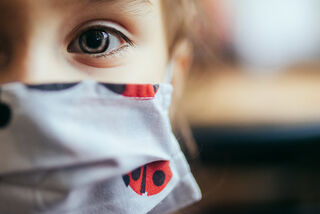Friends
When Friends Have Different Family Rules for COVID-19
Differences in family pandemic rules can strain a child’s friendships.
Posted March 22, 2021 Reviewed by Lybi Ma
- Different pandemic rules between families can be a sore point for children. Some families are more cautious, others are less. Here are different types of families and how they manage COVID.
- The Protective Group is extremely cautious of pandemic protocols.
- The Empathic Group wants to follow expert advice and do the right thing.
- The Frazzled Group is more worried about paying bills and getting through each day.

“It’s not fair! Jeremy’s parents let him do that!”
“It’s not safe! Why are her parents letting her do that?”
A frustrating friendship challenge kids are facing right now involves differences in families’ pandemic rules. Some families are noticeably more or less cautious than others. These differences can lead to severed friendships or just practical difficulties around negotiating whose rules to follow. They also create frustration and resentment on both sides. Some kids feel rejected; others feel left out.
We’re all experiencing the pandemic, but it means very different things for different people, depending on their circumstances, experiences, and beliefs.
Identifying different pandemic perspectives
I recently read the results of a market research study conducted by Burke and Seed Strategy about people’s attitudes and beliefs regarding COVID-19. The study involved online interviews with a nationally representative sample (age, gender, income, ethnicity) of over 2000 adults in the United States, plus some follow-up video interviews. The goal of the study was to understand consumer behavior, but I think it offers some useful insights to build empathy and compassion for people with different pandemic perspectives.
The study identified three main groups of parents and spelled out their views about navigating the pandemic. They labeled these groups The Protective, The Empathic, and The Frazzled. Here’s a closer look at each of them:
The Protective Group
The Protective are very scared of getting COVID-19. They have risk factors, health conditions, or other vulnerabilities that make the possibility of a family member getting infected very, very frightening. Their top priority is to keep their family safe, so their family pandemic rules are likely to be very strict.
The Empathic Group
The Empathic feels responsible for both their family and their broader community. They believe in following expert advice and want to do the right things to help everyone. It’s important to keep in mind that this group is not “morally superior.” They have the education, resources, and financial freedom to be able to cautious and focused on the well-being of their whole community. They feel fortunate but also challenged by the difficulties of working from home with kids around. Their family pandemic rules are likely to be fairly strict.
The Frazzled Group
The Frazzled are feeling overwhelmed by trying to manage work, childcare, and financial obligations during the pandemic. Their focus is on just getting through each day. They’re more concerned with paying the bills and creating some sense of normalcy than the risk of a family member getting sick. They value personal freedom and believe it’s sometimes justified to break the rules in order to take care of their family’s needs. For instance, they might engage in activities that others feel are too risky because they consider them necessary to support a family member’s mental health or well-being. Their family pandemic rules may be less strict than those of other families, which can be upsetting for more cautious families who see their behavior as putting others at risk, but they’re coming from a place of wanting care for their loved ones, not trying to hurt others.
Finding compassion for people with different pandemic perspectives
Our own beliefs may or may not match any of these three groups, but it’s easy to empathize with each of them. We can imagine a parent who is terrified of any contact outside the family, due to concerns about a child with severe asthma, and therefore forbids that child to see any friends, even outdoors. We can also imagine a parent who decides to let a child who is feeling deeply sad and lonely have an indoor playdate with a friend or two.
We may not agree with these decisions for our own family but recognizing the human concerns behind them can help us be more empathic toward those who are trying to survive the pandemic in different ways. It doesn’t directly or completely solve the problem of kids (and adults!) having to deal with different family pandemic rules among friends and relatives, but compassion is always a good place to start. Most of us are doing the best we can.
© Eileen Kennedy-Moore, PhD
References
Related posts:
When—Not If—You Lose It with Your Child During Coronavirus
The Refracting Nature of COVID-19: A Business-Centric Look at How American Consumers
Vies the 2020 Pandemic in Vastly Different Lights. Presentation by Burke and Seed Consulting. https://www.burke.com/covid19segmentation/ For more information on this work, contact Burke’s Chief Research Officer, Jamie Baker-Prewitt, PhD, Jamie.Baker-Prewitt@burke.com


